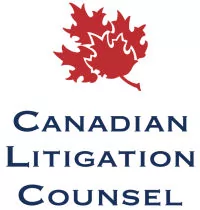Case citation: Paramount Resources Ltd v Grey Owl Engineering Ltd, 2024 ABCA 60
When the polluter pays for the clean-up costs of a pipeline leak, can they then turn around and seek to recover these costs from the parties responsible for installing the pipeline decades before? That was the issue facing the Alberta Court of Appeal in Paramount Resources Ltd v Grey Owl Engineering Ltd, 2024 ABCA 60. For only the second time, the Court of Appeal considered s. 218 of the Environmental Protection and Enhancement Act and whether limitation periods should be extended in the context of environmental pollution claims.
In, Paramount, Brownlee LLP (along with co-defence counsel) successfully argued that the Plaintiff's limitation period should not be extended to permit a $20 million-dollar environmental claim to proceed against the parties who were involved in the transition of a steel pipeline into a fiberglass one over 10 years before the leak occurred.
Background
The Plaintiff owned and operated a pipeline that ran through Crown land in northern Alberta. In 2004, the Plaintiff converted that pipeline into a "carrier" pipeline which required a fiberglass lining to be installed. The (eventual) defendants had various roles and involvement with the installation of the lining and licencing of the carrier pipeline but did not have any further involvement with the pipeline after 2004. Unfortunately, in 2018, a significant leak was discovered to have escaped from the pipeline which spread onto Crown lands. The Plaintiff was required under the EPEA to report the spill and remediate the contamination which was estimated to cost around $20 million. The Plaintiff would have been liable under the EPEA if it failed to remediate the contamination as it was the person responsible for the substance and had a duty to clean it up.
The Plaintiff subsequently issued a claim against the defendant group in negligence alleging the leak was caused by a deficient installation and sought to recover the costs of remediation. The Plaintiff argued the pipeline was required to be installed below the frost line to avoid having moisture and condensation freeze in the annular between the fiberglass lining and the actual pipeline. The Plaintiff alleged the defendant group failed to observe this issue during the installation of the fiberglass lining.
Legal Principles
Alberta has a 10-year limitation period which is commonly referred to as the "ultimate" limitation period because discoverability is not relevant. Alberta also has a 2-year limitation period but the analysis is much different for the 2-year limitation period as the clock generally does not begin to run until the injured party is aware of their claim and damages. However, for the 10-year limitation period, it does not matter when the injured party discovers their claim.
The 10-year limitation period has been criticized as being unfair in situations involving latent defects or environmental pollution claims which are sometimes not discovered for decades. For example, in the context of pollution claims, a buried gas tank that contaminates the surrounding earth may not be discovered until decades after it was buried (and likely by a subsequent innocent landowner). In response to these situations and recognizing that pollution can take years to detect, Alberta enacted s. 218 of the EPEA which permits the court to extend the limitation period if certain conditions are met.
The Court of Appeal previously determined in Brookfield Residential (Alberta) LP (Carma Developers LP) v Imperial Oil Limited, 2019 ABCA 35, that the objective of s. 218 is to ensure that "polluters pay" and to reduce the unfairness of limitation periods in the context of long-undetected emissions that become a problem many years later.
S. 218 sets out a non-exhaustive list of factors for the court to consider when extending the limitation period including: when the alleged adverse effect occurred; if it should have been discovered earlier if the claimant had exercised due diligence; whether extending the limitation period would prejudice the defence; and any other factor the court considers relevant. Accordingly, the judge hearing the matter has extensive discretion in determining whether to extend the limitation period.
The Court of Appeal here reiterated that s. 218 does not abolish the consideration of any limitation periods; these periods have their own policy objectives (such as bringing finality to matters) which must be balanced with the objectives of s. 218.
Each Case Will be Determined on its Facts
The facts of this case were unique compared to the limited number of other cases that have interpreted s. 218. This matter did not involve a slow undetected leak that occurred over multiple decades. Rather, the Plaintiff discovered the leak quite quickly largely due to its advanced detection system. This was also a sudden and extensive leak. Other cases that have applied s. 218 were usually applied in the context of a slow release of a pollutant from an old gas tank or a buried pit filled with waste.
However, the Plaintiff here was not an innocent landowner who inherited polluted lands through no fault of its own. The Plaintiff was also able to discover the leak quickly because it maintained and operated the pipeline. It would have also been in the best position to determine the depth of the pipeline and had a legal responsibility to maintain the pipeline.
Another distinguishing fact is that the defendant group was not liable under the EPEA for the spill. The Plaintiff was defined under the EPEA as the person responsible for the substance and had a statutory duty to remediate the spill. Here, there were no obligations on the defendant group under the EPEA.
Further, the Court of Appeal determined the defendant group had a limited and historic role in the modification of the pipeline whereas in other cases the defendants had sole responsibility for the source of the environmental pollution.
Lastly, while not entirely unique to this case, the Court determined that prejudice did exist for the defence group due to the passage of time, the fading of memories and the death of some of the key witnesses.
Concluding Remarks
The unique facts of this matter will be useful in applying s. 218 for future environmental claims but it should be remembered that the court is given wide discretion to consider any factors it deems relevant. The court must also balance the policy objectives of s. 218 and limitation periods. Accordingly, it is expected that s. 218 will continue to be litigated.
Here, the Court of Appeal placed an emphasis on the role of the Plaintiff in the spill determining it had a legal responsibility over the pipeline. The defendant group's limited role in the modification of the pipeline was also considered a factor for not extending the limitation period. Thus, the relationship between the claimant and the party against whom its claim is brought, along with the facts related to the pollution (its magnitude and the events leading up to it), must now be considered when applying s. 218.
* * *
Brownlee LLP is a member of the Canadian Litigation Counsel, a nationwide affiliation of independent law firms .
The content of this article is intended to provide a general guide to the subject matter. Specialist advice should be sought about your specific circumstances.


